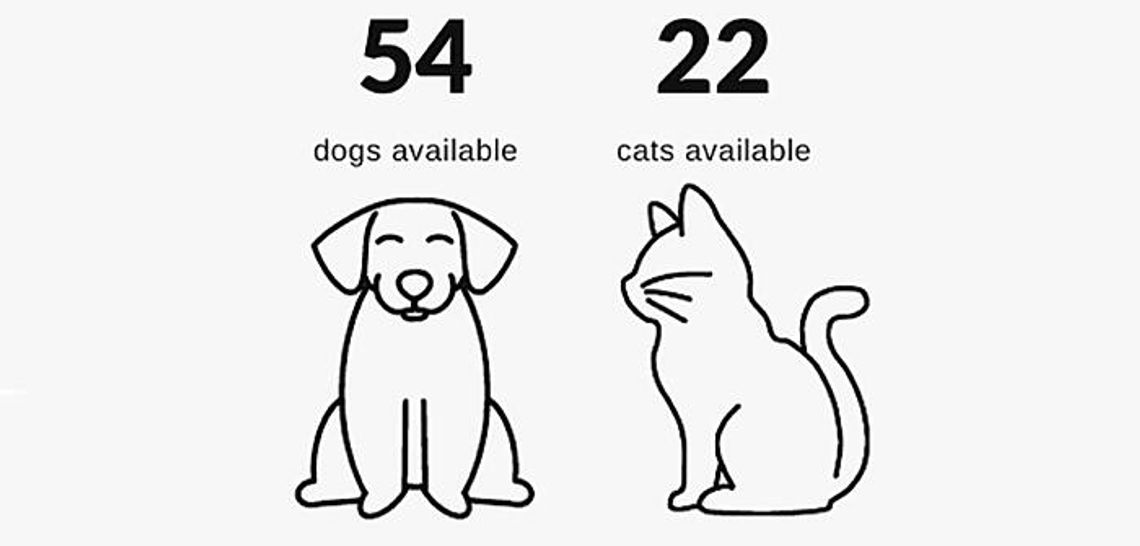By Brittany Anderson
HAYS COUNTY — Understanding what is going on in your local animal shelter can ensure the safety and wellbeing of hundreds of animals in the community.
San Marcos Regional Animal Shelter (SMRAS) operates as Hays County’s only public animal intake shelter and has continually struggled with overcapacity as the county’s population increases while resources deplete.
As of July 15, there were 257 animals at SMRAS, with 49 in foster homes and 208 in-house (at the shelter). Within the first two weeks of July, the shelter took in 23 owner surrenders, 12 return adoptions, 120 strays, 23 wild animals and two seized animals.
Christie Banduch, SMRAS Animal Services Manager, said that the shelters most recent adoption event/rescue plea helped, but there has to have some momentum that stays behind it.
“What we’re seeing is that everyone rushes in to save the day, and then adoptions dwindle and drop off again,” Banduch said. “Animals are coming in every single day. We need adopters, fosters and rescue support every single day.”
Banduch said that while the shelter is located in San Marcos, 30% to 40% of lost animals that come into the shelter are from unincorporated areas of Hays County and cities that don’t have their own animal control, like Wimberley and Dripping Springs.
“If you live in Hays County and your animal is missing, there’s a high likelihood that they’re here,” Banduch said. “We know that it’s someone’s baby; their nails are trimmed, they’re groomed,” adding that microchipping can be an affordable and effective solution to this.
Banduch said that on a busy intake day, the shelter can receive up to 30 to 40 animals. They currently have 93 dog kennels and 83 cat cages, and while their actual animal capacity is higher than the number of kennels and cages — mother cats will share a cage with their litter of kittens, for example — the shelter would ideally have 20 to 30 empty kennels a day so they don’t have to go into “panic mode.”
Banduch described this ideal situation as a revolving door, where animals are coming in and leaving at the same rate.
PAWS of Central Texas, which has shelters in Kyle and Dripping Springs, is a no-kill, nonprofit rescue partner of SMRAS. Minnie Buckhaults, PAWS marketing and social media coordinator, said that PAWS diverts many strays and surrenders from SMRAS to their shelter if they have the space.
“When SMRAS is at overcapacity, we send some of our intake staff to evaluate the animals and pull them into our program,” Buckhaults said. “There are high requests for this throughout the year, but especially around holidays or when people are going on vacation.”
Banduch said that while you may have good intentions to help the shelter by adopting, it is better to ensure you have thought it through and that it’s right for your current situation. Listening to shelter staff is key in determining if a pet will fit, as well as how to successfully integrate shelter animals into your home.
“Don’t be an impulse shopper,” Banduch said. “Have realistic expectations. … [I always tell people] you’re adopting a toddler for 15 to 20 years. They’re never going to age past two. We want to find forever homes, not impulsive homes that aren’t ready. If you’re not ready, there’s other ways you can help us.”
Along with adopting, fostering and volunteering when possible, make sure people know how to be a responsible pet owner. Identify what resources the community needs to do this and be part of spaces where these conversations take place, like city council meetings.
“Support shelter staff. We’re on the frontlines here,” Banduch added. “Everything that we do in our workday is to save these animal’s lives. If it’s heartbreaking from your couch at home, imagine how we feel here.”
Banduch reiterated that if you are struggling with your pet in any way — training, behavioral problems or are in need of financial assistance or medical care or food for your pet — SMRAS has programs available that offer help for these things as an alternative to surrendering.
PAWS echoes similar sentiments, encouraging anyone who is considering surrendering their pet because of unforeseen circumstances or they feel they aren’t the right fit to contact the shelter first.
“A lot of people are nervous to adopt and take an animal into their home because they’ve never had one before, or have had one and are not sure how to acclimate. Some behaviors can be scary and present other challenges,” Buckhaults said. “Call PAWS. We can talk to you and offer advice. We really want to make sure that your foster pet or adoptive pet succeeds in your home. We’ll do everything we can.”
Above all else, though, is spaying and neutering your pets. Banduch said that the procedure needs to become something that is instinctively done, and that there needs to be resources for it made more widely available and affordable in Hays County.
“Fixing your own animals saves more lives than anything else that you can do,” Banduch said. “Talk to your neighbors about it. It’s a huge problem in Hays County. Educate one another; reach out. What are the barriers? Is it something that you or we [SMRAS] can help them with?”
Ultimately, the culture around owning pets is what needs to change, Banduch said.
“We’re not going to get out of the cycle of animals needing shelter until we start to see some real changes within our community and how we are treating our animals,” Banduch said. “They are not disposable. … They are not novelty items. … They are living, sentient beings and not just something you can throw away. It’s a commitment; it’s a responsibility.”
Adoptable pets, the latest adoption specials and other information and updates on the shelter can be found on the SMRAS Facebook page at www.facebook.com/SanMarcosAnimalShelter. Learn how to become a foster or volunteer at www.sanmarcostx.gov/208/San-Marcos-Regional-Animal-Shelter.











